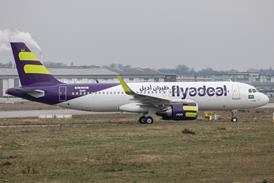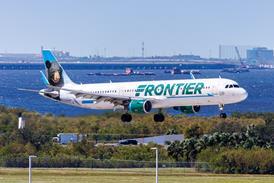Echoing similar sentiments expressed by its fellow network carriers, US Airways is highlighting sagging demand, and stresses the difficulty of predicting when it might stabilize.
During a 16 March investor call carrier President Scott Kirby explained that US Airways ended 2008 strong, but bookings stared to weaken considerably in January as an already limp demand for business travel continued to decline.
Kirby also notes that while leisure travel bookings held up, pricing in that segment deteriorated putting pressure on yields.
Booked revenue started to stabilize in mid-February through the first couple of weeks of March, Kirby explains. But he cautions, "you have to be careful on that", as carriers are likely to see sequential weakness in March in terms of unit revenues due to the shift in Easter holiday to April. But he also says that January had some lift in bookings from the fourth quarter of 2008 when demand was stronger.
Highlighting US Airways had "less on the books" for February and March Kirby explains those months are more affected by the anemic booking period from the beginning of January through mid-February.
Going forward Kirby says demand looks murky as volatility still exists in booking data at US Airways. The carrier is "cautiously optimistic" from what it has seen during the last couple of weeks.
Kirby believes US Airways is well positioned in the uncertain environment against other legacy airlines. The carrier has less international exposure, which was seen as a weakness from an investor perspective in 2007-2008 when that segment was outperforming. "But clearly all the capacity cuts will be a benefit and tailwind in 2009, which we think could help us outperform in passenger revenues", he explains.
US Airways has trimmed international capacity two percent for the summer period, and the airline is evaluating if additional cuts are necessary beyond September.
Kirby also predicts a solid ancillary revenue performance should help US Airways navigate through the current economic climate. Noting the short-haul, domestic nature of the airline's operations he says passenger unit revenues were down 9%-11% in February, but total revenue per available seat mile "was four points better than that" due to gains in ancillary revenues.
Previously US Airways estimated generating up to $500 million annually from ancillary revenues. Kirby notes the carrier ramped up ancillaries during third quarter of 2008, logging $35-$40 million for that time frame. During the fourth quarter ancillary revenues grew to roughly $75 million.
Source: Air Transport Intelligence news























